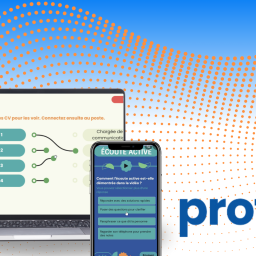HR Ressources Language Courses Recent Blogs Technologie d'éducation
November 26, 2025
At ELAM, we see every day how stronger language skills unlock better work experiences. The data backs it up: this isn’t just “nice to have” training—it’s a business accelerator.
Hiring & retention get easier.
![]() Nine in ten U.S. employers rely on talent with skills in at least one language beyond English, and over half expect demand to increase in the next five years. Alarmingly, one in four employers has lost business because they lacked those skills—clear proof that multilingual capability is now a competitive necessity.
Nine in ten U.S. employers rely on talent with skills in at least one language beyond English, and over half expect demand to increase in the next five years. Alarmingly, one in four employers has lost business because they lacked those skills—clear proof that multilingual capability is now a competitive necessity.
Language proficiency boosts earnings and career mobility.
Employees who speak more than one language often command a 5–20% pay premium—a market signal that organizations value multilingual expertise. In Canada, test-based measures of official-language ability show independent positive effects on earnings, with reading especially predictive. Better language skills don’t just feel valuable—they are financially valuable.
Productivity rises when communication friction drops.
Poor communication raises stress for 51% of workers and drags down productivity for 41%—exactly the kind of friction language training alleviates. By equipping teams to operate smoothly across languages and cultures, companies reduce misfires, speed up decisions, and improve employee confidence.
Global collaboration gets faster—and more equitable.
In UK workplaces, nearly a third of employees report using a second language at work (alongside English). English remains the top global business language, but French, Spanish, and Mandarin are also widely used—meaning multilingual teams can coordinate more directly with clients and colleagues, without constant translation bottlenecks.
Customer experience improves—and revenue follows.
![]() When teams can listen, probe, and propose in a client’s preferred language, discovery calls go deeper and solutions land faster. Employers know it: 32% report high dependency on multilingual staff, and many say the gap is growing—especially for Spanish and Chinese. Filling that gap protects relationships and expands market reach.
When teams can listen, probe, and propose in a client’s preferred language, discovery calls go deeper and solutions land faster. Employers know it: 32% report high dependency on multilingual staff, and many say the gap is growing—especially for Spanish and Chinese. Filling that gap protects relationships and expands market reach.
Training delivers measurable day-to-day benefits.
Only 10% of employees with limited English feel they can fully express themselves at work; 72% say their jobs would be easier with better English. That’s a direct lever for engagement, safety, and quality—particularly in distributed or cross-border teams. ELAM’s targeted programs help employees participate fully, not just “get by.”
Which languages matter most?
Priorities vary by sector and market, but recent employer and education insights consistently highlight Spanish, Mandarin, French, Arabic, and German among the most strategically useful languages. Aligning learning pathways to real business exposure ensures faster ROI.
How ELAM turns insights into outcomes
- Role-based pathways: We map language outcomes to job tasks (sales discovery, safety briefings, customer support) so learners practice what they’ll actually use.
- Assessment to action: We benchmark level, set micro-goals, and track progress against workplace KPIs (time-to-resolution, CSAT, first-call success).
- Manager visibility: Clear dashboards and feedback loops keep leaders informed and learners motivated.
Language skills don’t just enrich resumes—they remove friction from everyday work, protect revenue, and open markets. If you’re ready to translate these statistics into performance, ELAM can help you design a program that moves the metrics that matter.


 Nine in ten U.S. employers rely on talent with skills in at least one language beyond English, and over half expect demand to
Nine in ten U.S. employers rely on talent with skills in at least one language beyond English, and over half expect demand to 
 When teams can listen, probe, and propose in a client’s preferred language, discovery calls go deeper and solutions land faster.
When teams can listen, probe, and propose in a client’s preferred language, discovery calls go deeper and solutions land faster.












